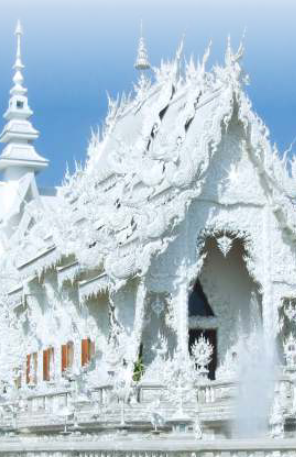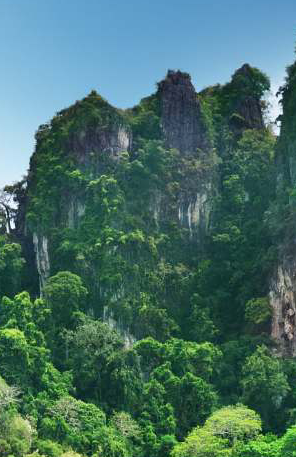Thailand Weekend Excursions
CHIANG MAI – CHIANG RAI EXCURSION (THAILAND)

DAY 01(Saturday)
In the morning – After breakfast drive to Chiang Rai approximately three & half hours
journey.
Arrive at Mae Khachan Hot Spring the hot spring is very popular among Thai People to
stop on the way to Chiang Mai or Chiang Rai. When you travel this area there will local
people trying to sell eggs to the tourists in order to boil it in the hot springs. Besides
boiling the eggs, soaking their legs in warm water are the popular activities to do as
well. Also tourist can enjoy shopping the local products like silvers and wood carving.
On the way to Wat Rong Khun, more well-known among foreigners as the White
Temple, is an unconventional Buddhist temple in Chiang Rai, Thailand. Designed in
1997 by noted Thai painter-turned- architect Chalermchai Kositpipat, this magnifcent
temple is a bizarre blend of traditional Thai architecture and the surreal.
The main
building is painted white to symbolise Buddha’s purity, and is covered in mosaics of
mirrors, sparkling in the sun. All around the complex are intricate sculptures of
demons, skulls, severed heads handing from trees and other bizarre objects.
Go to Wat Chedi Luang in Chiang Sean Ancient City a small district of Chiang Rai
province and the Ancient City of Chiang Saen is one of the oldest settlements in the
Kingdom of Thailand. It is located along the Mekong River. The residents of Chiang
Saen have a very easy-going and peaceful lifestyle. Many of the residents live nearby
one of the hundreds of ancient structures that once graced this city.
Visit Wat Che Luang a royal stupa temple there are quite a few similarly named
temples around but we’re referring to the old Chiang Saen one, so named since it’s
thought to have been the principal temple of King Mengrai’s former capital. Located in
the northwest of Chiang Rai province on the banks of the Mekong near the Golden
Triangle, the city’s ruins are scattered throughout the modern town of Chiang Saen.
Travel to Golden Triangle the border regions between Thailand, Burma and Laos
and when gold was used by Chinese traders to pay for opium grown there.
The history of the opium poppy in the Golden Triangle can be traced back to various
Chinese migrant groups for whom the poppy was an integral part of their cultural
traditions. Elderly people regarded opium, and still do, as an acceptable natural
stimulant. The Hmong tribe has always produced opium for trade, at rst it was
intended for the Chinese market, but later the French colonists bought large amounts
during their reign in Indochina.
Overnight stay at accommodation, Chiang Rai (Meals- Breakfast)
DAY 02(Sunday)
Morning – You are at leisure.
Mid-morning – Visit Tea Farm. After the visit drive back to Chiang Mai. Arrive at Chiang
Mai and check into your accommodation.
Overnight stay at accommodation, Chiang Mai (Meals – Breakfast
& Dinner).

Services Included
- 01 nights stay on trip.
- Accommodation on sharing occupancy basis.
- All transfers and sightseeing by vehicle.
- Check-in time is 2 p.m. and check-out time is 12 noon for most of the hotels
- We can usually arrange earlier check-in
- Meals as per itinerary.
Services Excluded
- Any personal expenses such as tips, laundry and drinks.
- Any extra meals (other than those specifically laid down).
- Personal Travel Insurance, Visa etc.
- Camera fees (both still and video).
- International flight tickets.
- Miscellaneous
Share on social media
Facebook
Twitter
Google+
LinkedIn